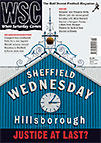 Damning evidence about the state of their ground makes tough reading for Owls fans, admits Tom Hocking
Damning evidence about the state of their ground makes tough reading for Owls fans, admits Tom Hocking
In late 1898 officials from The Wednesday FC learned that the lease on Olive Grove, their home for a decade, could not be renewed. The land was needed for a railway expansion and they had until the end of the season to find a replacement. With few locations available they settled on High Bridge, Owlerton. The plot of meadowland to the north of Sheffield was uneven, a long way from the city centre and poorly served by public transport.
The main stand from Olive Grove was transferred brick by brick and reassembled on the south side, adjacent to the River Don. The land was flattened, railings were erected round the pitch, new stands were built on the north and west sides and a bank of earth was piled at the east end to give supporters an elevated view of the pitch. The Owlerton stadium was born.
By 1914, when the name was changed to Hillsborough, it boasted a new south stand designed by Archibald Leitch and had hosted its first FA Cup semi-final. The first cantilever stand in the country running the full length of the pitch was built on the north side in 1960, it hosted games during the 1966 World Cup and 11 years later held its first national final, a League Cup replay between Everton and Aston Villa. In 1986 the Kop became the biggest covered terrace in Europe when it was roofed using funds raised by the fans. It held 22,000 and was opened by the Queen.
Hillsborough is integral to the identity of Sheffield Wednesday. Players and managers have come and gone – some exceptional, some appalling, many mediocre – but the supporters have always been able to point to their stadium as a symbol of what the club can achieve. They built it from a field of dandelions to one of the most revered grounds in the country.
This makes the report of the Hillsborough Independent Panel difficult reading. The failings of the ground are there for all to see: seven turnstiles for over 10,000 people; the tunnel leading to the central pens was too steep; exits too far away; crush barriers too far apart and the wrong height. Warning signs at the 1981 Cup semi-final were not heeded: police were forced to allow Spurs fans on to the side of the pitch because of a crush at the Leppings Lane end of the ground. When police told Bert McGee, Wednesday’s chairman at the time, they had taken the action because there was “a real chance of fatalities” his retort was: “Bollocks – no one would have been killed.”
The ground hosted two more semi-finals, in 1987 and 1988, before the disaster on April 15, 1989. On that day McGee wrote in his programme notes: “As you look around Hillsborough you will appreciate why it has been regarded for so long as the venue for all kinds of important matches. It is a stadium that befits such occasions and the large crowds they attract.”
Dave Richards, who took over from McGee in 1990, refused to put up a memorial for ten years after the event. The club only issued an official apology on September 12, just before the release of the report.
That move was instigated by the current regime and it is important to make a distinction between Sheffield Wednesday now and those who ran it before. Some board members remained in place until 2010 but revelations of stubborn, unhelpful attitudes and an unwillingness to accept responsibility at the top level are not a surprise. Until Milan Mandaric bought the club in November 2010 the relations between boardroom and fans were volatile. The old guard are now gone. Mandaric and his new regime cannot change the behaviour of their predecessors but the apology is one of many examples of the club’s improved conduct.
When criticism is being hurled at a loved one it is only natural to jump to the defence. Wednesday fans will always be bullish about Hillsborough and it is hard not to take the insults being aimed at it as an attack on the fans who frequent the ground week in, week out. They deserve to know who was responsible for the hosting of matches for a decade with a safety certificate last updated in 1979. It was not Liverpool fans’ fault, nor was it Wednesday’s fans or any other. Hillsborough was not the first football disaster in this country but we can only hope it is the last and the culpable individuals are brought to justice.
From WSC 309 November 2012